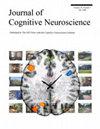Shared Patterns of Cognitive Control Behavior and Electrophysiological Markers in Adolescence
IF 3.1
3区 医学
Q2 NEUROSCIENCES
引用次数: 0
Abstract
Behavioral parameters obtained from cognitive control tasks have been linked to electrophysiological markers. Yet, most previous research has investigated only a few specific behavioral parameters at a time. An integrated approach with simultaneous consideration of multiple aspects of behavior may better elucidate the development and function of cognitive control. Here, we aimed to identify shared patterns between cognitive control behavior and electrophysiological markers using stop-signal task data and EEG recordings from an adolescent sample (n = 193, aged 11–25 years). We extracted behavioral variables covering various aspects of RT, accuracy, inhibition, and decision-making processes, as well as amplitude and latency of the ERPs N1, N2, and P3. To identify shared patterns between the two sets of variables, we employed a principal component analysis and a canonical correlation analysis. First, we replicated previously reported associations between various cognitive control behavioral parameters. Next, results from the canonical correlation analysis showed that overall good task performance was associated with fast and strong neural processing. Furthermore, the canonical correlation was affected by age, indicating that the association varies depending on age. The present study suggests that although distributional and computational methods can be applied to extract specific behavioral parameters, they might not capture specific patterns of cognitive control or electrophysiological brain activity in adolescents.青春期认知控制行为和电生理标记的共同模式。
从认知控制任务中获得的行为参数已经与电生理标记联系在一起。然而,之前的大多数研究一次只调查了几个特定的行为参数。同时考虑多方面行为的综合方法可能会更好地阐明认知控制的发展和功能。在此,我们利用青少年样本(n = 193,年龄 11-25 岁)的停止信号任务数据和脑电图记录,旨在找出认知控制行为和电生理标记之间的共同模式。我们提取了行为变量,包括RT、准确性、抑制和决策过程的各个方面,以及ERP N1、N2和P3的振幅和潜伏期。为了确定两组变量之间的共同模式,我们采用了主成分分析和典型相关分析。首先,我们复制了之前报道的各种认知控制行为参数之间的关联。接着,典型相关分析的结果表明,任务的总体良好表现与快速而强大的神经处理有关。此外,典型相关性还受到年龄的影响,表明这种关联因年龄而异。本研究表明,尽管分布和计算方法可用于提取特定的行为参数,但它们可能无法捕捉青少年认知控制或大脑电生理活动的特定模式。
本文章由计算机程序翻译,如有差异,请以英文原文为准。
求助全文
约1分钟内获得全文
求助全文
来源期刊
CiteScore
5.30
自引率
3.10%
发文量
151
审稿时长
3-8 weeks
期刊介绍:
Journal of Cognitive Neuroscience investigates brain–behavior interaction and promotes lively interchange among the mind sciences.

 求助内容:
求助内容: 应助结果提醒方式:
应助结果提醒方式:


